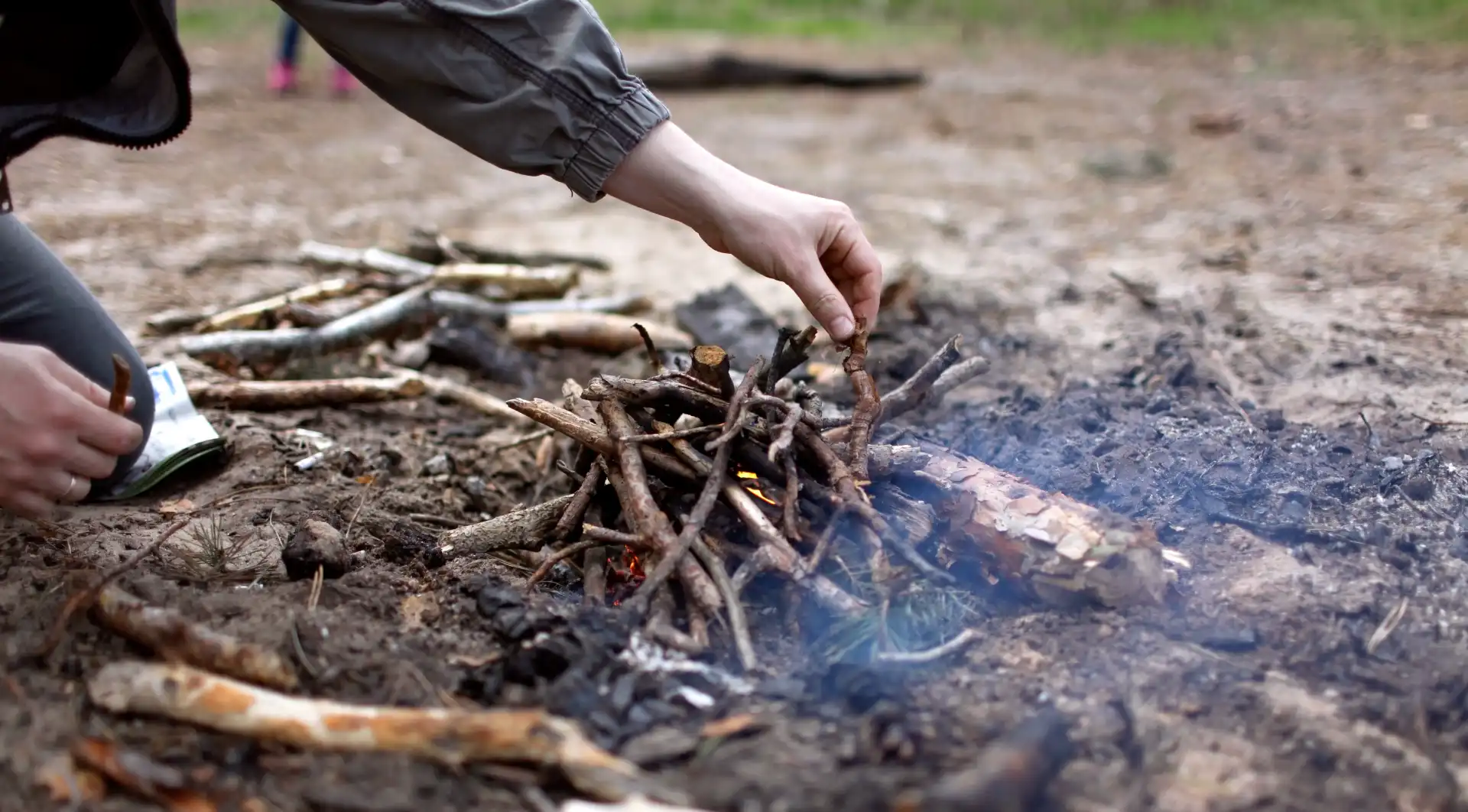Fire Without Matches: Mastering Primitive Ignition Techniques
In a survival situation, fire means life. It’s heat, light, safety, and the ability to purify water and cook food. But what if you have no matches, no lighter, and no modern gear? You fall back on primitive fire starting—a skill every prepper should master in 2025.
This guide walks you through the most effective ancient ignition methods, from friction to spark, using materials found in nature or scavenged from your environment. These are not tricks—they’re time-tested techniques practiced for thousands of years.
Why Learn Primitive Fire Starting?
- 🔥 Redundancy: Lighters break. Matches get wet. Primitive methods always work—if you do.
- 🔥 Resourcefulness: Use what’s around you, whether in a forest, ruins, or backyard.
- 🔥 Confidence: There’s power in knowing you can survive without tech or tools.
As the saying goes: “One is none. Two is one.” Primitive fire is your third option—and often your most reliable in true wilderness survival.
1. Bow Drill Method
The bow drill is one of the most iconic friction fire techniques. It uses four main components:
- Spindle: A straight, dry stick (softwood works best)
- Fireboard: A flat board with a notch cut for the ember
- Bow: A curved stick with a shoelace or cord tied end to end
- Socket: A stone or wood piece to apply pressure on the spindle
Use smooth, steady strokes to create heat and dust in the notch. Once the dust smokes, you’ll have an ember. Transfer it to your tinder nest and blow into flame.
👉 Also read: Survival Psychology: Train Your Mind for Pressure
2. Hand Drill Method
More difficult than the bow drill, the hand drill is completely tool-free—but extremely rewarding.
- Roll a thin, straight spindle between your palms
- Use downward pressure against a fireboard notch
- Let the ember form in the dust pile, then transfer
Start with dry plants like yucca, mullein, or soft cedar. Build calluses or wear leather to prevent blisters.
3. Flint and Steel
This method was favored by mountain men and early explorers. All you need is:
- Carbon steel striker
- Hard flint rock or quartz
- Char cloth or dry punk wood to catch the spark
Strike sharply to shave sparks onto the char cloth, then fold it into your tinder bundle and blow it into flame. This method works in damp conditions when friction fire might fail.
4. Solar Fire: Using the Sun
Sunlight can ignite tinder if concentrated through a lens. Methods include:
- Magnifying glass or convex lens (eyeglasses work)
- Clear ice lens carved and polished into shape
- Balloon filled with water (sphere shape focuses light)
Ideal for dry, sunny climates. Use dry leaves, paper, or char cloth as tinder.
👉 Related: Restoration Tools Every Prepper Should Own
5. Steel Wool and Battery
A modern-meets-primitive method. Works great with minimal materials:
- Rub fine steel wool across both terminals of a 9V battery
- Sparks will ignite the wool instantly
- Feed the flame with dry tinder
Keep this trick in your urban survival kit—it’s one of the easiest methods to pull off with scavenged gear.
Critical Tip: Tinder is Everything
No matter the method, your fire won’t light without proper tinder. Gather these materials before ignition:
- Tinder bundle: Dry grass, shredded bark, wood shavings, dryer lint
- Kindling: Pencil-thin twigs, progressing to thicker sticks
- Structure: Teepee, log cabin, or lean-to around the ember
Tinder should be dry, fluffy, and plentiful. A great fire starter fails without it.
Conclusion: Ancient Skill, Modern Relevance
Knowing how to make primitive fire could be the skill that keeps you alive when the grid fails or your gear is lost. It’s not easy—but with practice, it becomes second nature. Fire starting builds patience, focus, and confidence—qualities every prepper needs.
✔️ Light up more survival skills:
Start slow. Practice often. Ignite your independence.
